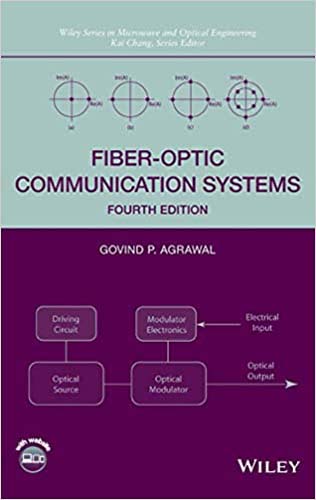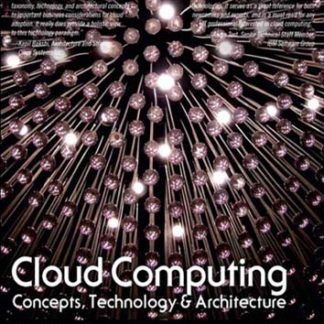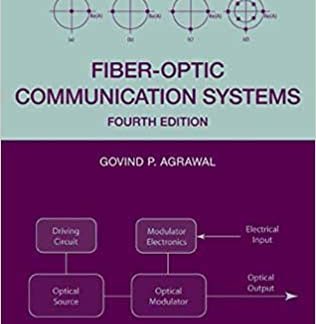“Despite the otherwise excellent quality of the book, there are also several typos, in the text as well as in the problems.” (Optics and Photonics News, 13 May 2011)
The definitive guide to fiber-optic communication systems, now fully up-to-date
SInce the release of the previous edition of this proven bestseller, fiber-optic communication systems (FOCS) have revolutionized the telecommunications industry and, due to advantages over electrical transmission, have largely replaced copper wire communications. Now, the Fourth Edition continues this trusted resource’s tradition of providing the most comprehensive FOCS coverage by incorporating the recent advances in the field, emphasizing both the physical understanding and engineering aspects.
Featured are two new chapters: one deals with the advanced modulation formats (such as DPSK, QPSK, and QAM) that are increasingly being used for improving spectral efficiency of WDM lightwave systems; the other focuses on new techniques such as all-optical regeneration that are under development and likely to be used in future communication systems. All other chapters have been updated, and material has been restructured to be better suited for a two-semester course on optical communications.
Students and researchers alike will benefit from the extensive pedagogical aids, including:
- Extensive reference lists for each chapter
- A survey of recent research material for each topic
- Relevant end-of-chapter practice problems for instructors and students
- A Solutions Manual available to instructors on request
- State-of-the-art software on the enclosed website, which students can use to design point-to-point optical links, as well as additional problems for each chapter
Used worldwide as a textbook in many universities, Fiber-Optic Communication Systems is intended primarily for graduate students of fiber-optic communications. It is also a valuable resource for undergraduate courses at the senior level, as well as an indispensable professional reference for engineers and technicians in the telecommunications industry and scientists working in the fields of fiber optics and optical communications.
From the Back Cover
The definitive guide to fiber-optic communication systems, now fully up-to-date
SInce the release of the previous edition of this proven bestseller, fiber-optic communication systems (FOCS) have revolutionized the telecommunications industry and, due to advantages over electrical transmission, have largely replaced copper wire communications. Now, the Fourth Edition continues this trusted resource’s tradition of providing the most comprehensive FOCS coverage by incorporating the recent advances in the field, emphasizing both the physical understanding and engineering aspects.
Featured are two new chapters: one deals with the advanced modulation formats (such as DPSK, QPSK, and QAM) that are increasingly being used for improving spectral efficiency of WDM lightwave systems; the other focuses on new techniques such as all-optical regeneration that are under development and likely to be used in future communication systems. All other chapters have been updated, and material has been restructured to be better suited for a two-semester course on optical communications.
Students and researchers alike will benefit from the extensive pedagogical aids, including:
- Extensive reference lists for each chapter
- A survey of recent research material for each topic
- Relevant end-of-chapter practice problems for instructors and students
- A Solutions Manual available to instructors on request
- State-of-the-art software on the enclosed website, which students can use to design point-to-point optical links, as well as additional problems for each chapter
Used worldwide as a textbook in many universities, Fiber-Optic Communication Systems is intended primarily for graduate students of fiber-optic communications. It is also a valuable resource for undergraduate courses at the senior level, as well as an indispensable professional reference for engineers and technicians in the telecommunications industry and scientists working in the fields of fiber optics and optical communications.
About the Author
GOVIND P. AGRAWAL is a professor at the Institute of Optics at the University of Rochester and a Fellow of both the Optical Society of America and the Institute of Electrical and Electronics Engineering. He is also a Senior Scientist at the Laboratory for Laser Energetics. Dr. Agrawal is author or coauthor of more than 300 research papers, book chapters, and monographs.





Reviews
There are no reviews yet.